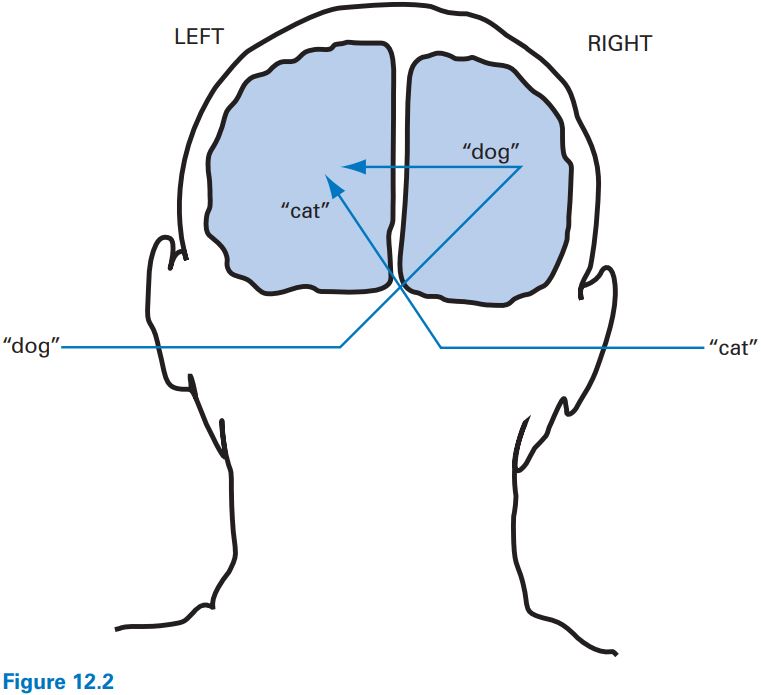


 Grammar
Grammar
 Tenses
Tenses
 Present
Present
 Past
Past
 Future
Future
 Parts Of Speech
Parts Of Speech
 Nouns
Nouns
 Verbs
Verbs
 Adverbs
Adverbs
 Adjectives
Adjectives
 Pronouns
Pronouns
 Pre Position
Pre Position
 Preposition by function
Preposition by function 
 Preposition by construction
Preposition by construction
 Conjunctions
Conjunctions
 Interjections
Interjections
 Grammar Rules
Grammar Rules
 Linguistics
Linguistics
 Semantics
Semantics
 Pragmatics
Pragmatics
 Reading Comprehension
Reading Comprehension|
Read More
Date: 25-2-2022
Date: 2023-12-09
Date: 2024-01-05
|
Dichotic listening
An experimental technique that has demonstrated a left hemisphere dominance for syllable and word processing is called the dichotic listening test. This technique uses the generally established fact that anything experienced on the right-hand side of the body is processed in the left hemisphere, and anything on the left side is processed in the right hemisphere. As illustrated in Flaherty’s (2004) description at the beginning of this chapter, a stroke in the right hemisphere resulted in paralysis of the left leg. So, a basic assumption would be that a signal coming in the right ear will go to the left hemisphere and a signal coming in the left ear will go to the right hemisphere.
With this information, an experiment is possible in which a subject sits with a set of earphones on and is given two different sound signals simultaneously, one through each earphone. For example, through one earphone comes the syllable ga or the word dog, and through the other earphone at exactly the same time comes da or cat. When asked to say what was heard, the subject more often correctly identifies the sound that came via the right ear. This is known as the right ear advantage for linguistic sounds. The process involved is best understood with the help of the accompanying illustration. (You’re looking at the back of this head.)

In this process, the language signal received through the left ear is first sent to the right hemisphere and then has to be sent to the left hemisphere (language center) for processing. This non-direct route takes longer than a linguistic signal received through the right ear and going directly to the left hemisphere. First signal to get processed wins.
The right hemisphere appears to have primary responsibility for processing a lot of other incoming signals that are non-linguistic. In the dichotic listening test, it can be shown that non-verbal sounds (e.g. music, coughs, traffic noises, birds singing) are recognized more often via the left ear, meaning they are processed faster via the right hemisphere. So, among the specializations of the human brain, the right hemisphere is first choice for non-language sounds (among other things) and the left hemisphere specializes in language sounds (among other things too).
These specializations may actually have more to do with the type of processing, rather than the type of material, that is handled best by each of the two hemispheres. The essential distinction seems to be between analytic processing, such as recognizing the smaller details of sounds, words and phrase structures in rapid sequence, done with the “left brain,” and holistic processing, such as identifying more general structures in language and experience, done with the “right brain.”
|
|
|
|
دراسة تحدد أفضل 4 وجبات صحية.. وأخطرها
|
|
|
|
|
|
|
المجمع العلمي يقيم أنشطة وفعاليات قرآنية متنوعة في عدد من المحافظات
|
|
|